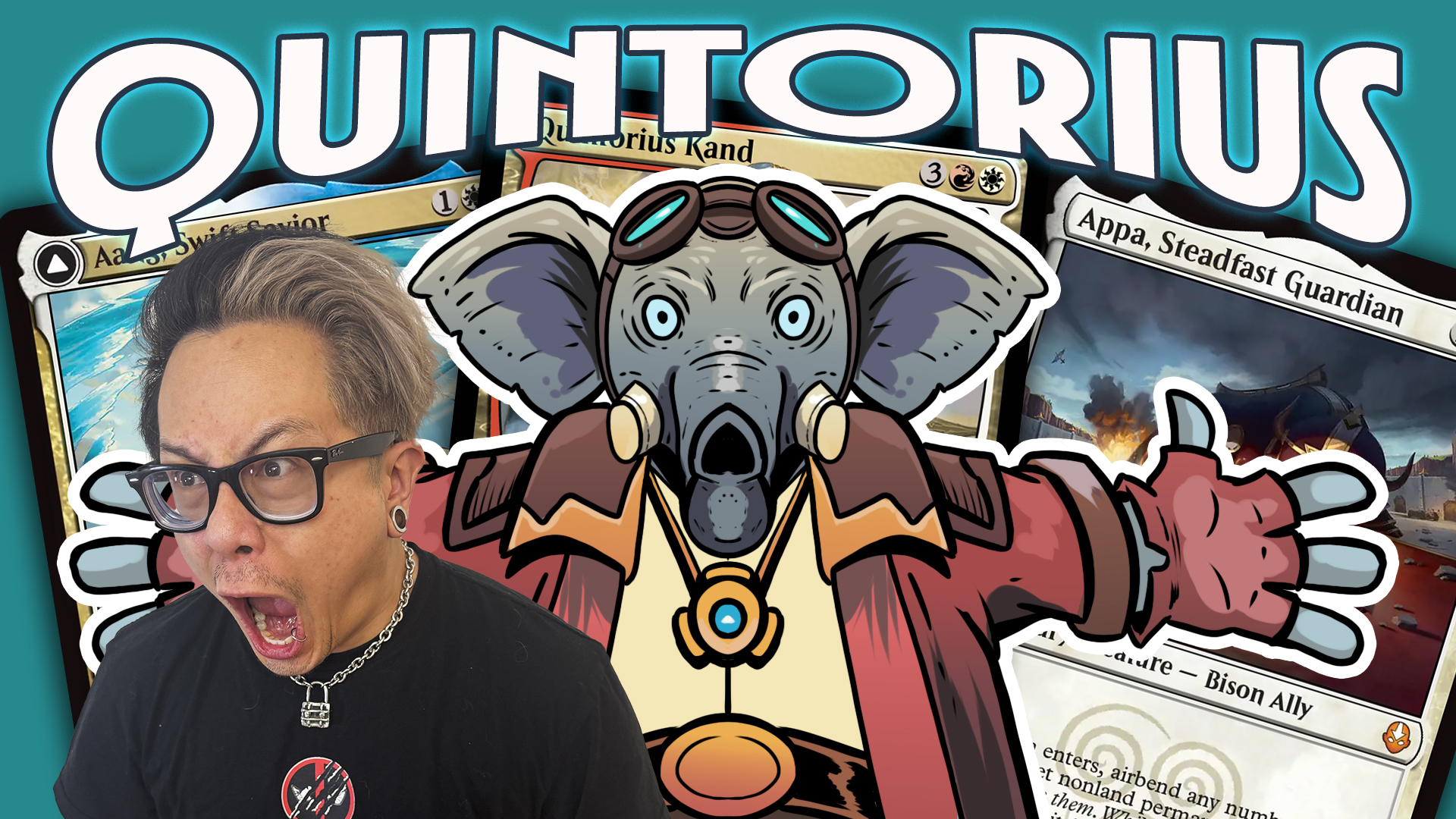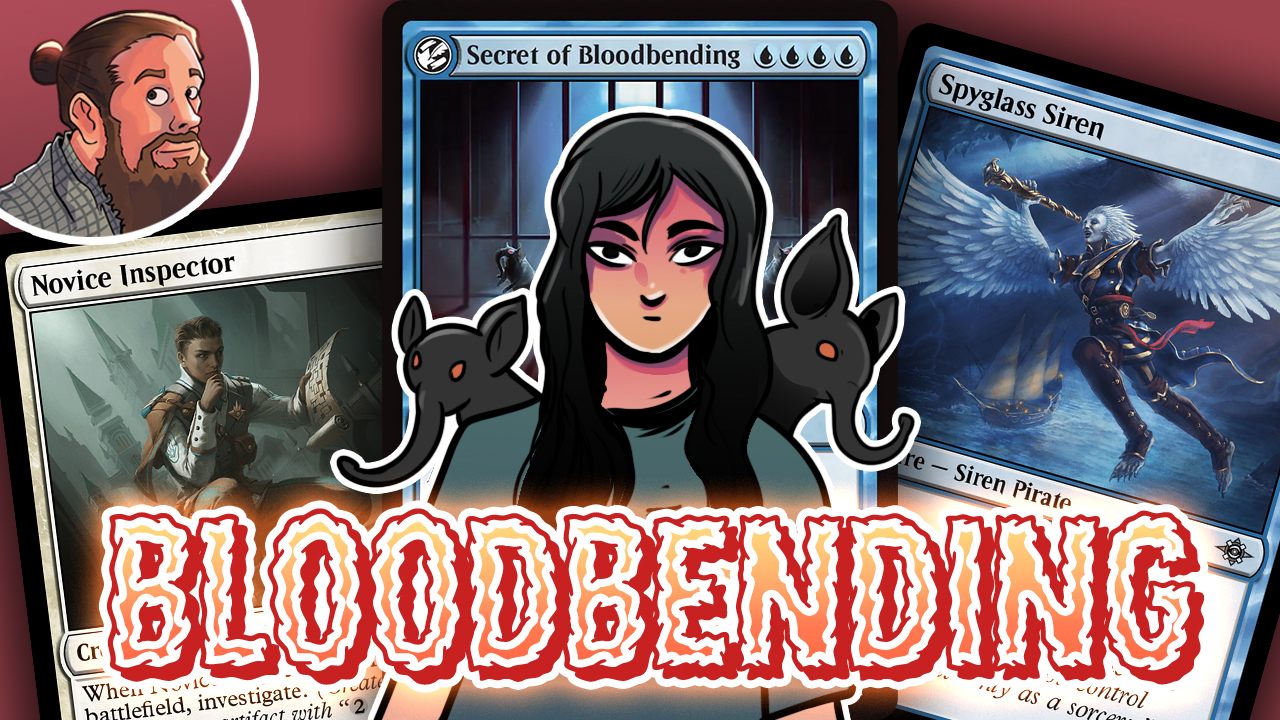Budget Magic: $83 (23 tix) CrocPatra (Standard)
ᐊᐃᓐᖓᐃ, Budget Magic lovers, it's that time again! This week, we're heading to Standard to play a deck I've been trying to make work for a long time now: a −1/−1 counter themed deck built around Hapatra, Vizier of Poisons! As soon as Amonkhet was released, people started asking for a Hapatra, Vizier of Poisons deck, but there just wasn't enough support to make a −1/−1 counter deck work. Thankfully, Hour of Devastation brought with it a bunch of more powerful options—maybe enough enough to put together a Hapatra, Vizier of Poisons deck that can actually win some games! There's no doubt that Hapatra, Vizier of Poisons is a powerful two-drop and can generate a ton of value in the form of deathtouch Snake tokens, but finding the right mix of support cards is actually pretty challenging because there are quite a few different options and a lot of synergy-based cards that don't look all that powerful at first glance. Eventually, some Crocodiles put Hapatra, Vizier of Poisons over the top, which leaves us with a deck I'm calling CrocPatra! Can Hapatra and Crocodiles keep up in a fast and powerful Standard? Let's get to the videos and find out, and then we'll talk more about the deck.
First, a quick reminder: if you enjoy the Budget Magic series and the other video content on MTGGoldfish, make sure to subscribe to the MTGGoldfish YouTube Channel to keep up on all the latest and greatest.
CrocPatra (Deck Tech)
CrocPatra vs. WU Monument
CrocPatra vs. Ramunap Red
CrocPatra vs. Temur Energy
CrocPatra vs. Sultai Reanimator
CrocPatra vs. UR Control

The Deck
The basic idea of CrocPatra is pretty simple: we have a bunch of −1/−1 counter payoffs, a bunch of enablers that put −1/−1 counters on things, and then a handful of random support cards (mostly removal spells). As such, probably the easiest way to break down the deck is to take it step by step and look at each part of the deck individually.
−1/−1 Counter Payoffs

Hapatra, Vizier of Poisons is the centerpiece of our deck and our cheapest −1/−1 counter payoff. While Hapatra, Vizier of Poisons is technically a creature, for the most part, she plays like an enchantment that happens to die to creature removal. While we find ourselves in a situation where we can attack, get in combat damage, and put a −1/−1 counter on something every once in a while, Hapatra, Vizier of Poisons more often just sits on the battlefield and makes 1/1 deathtouch Snakes. While it might not seem like that great of a payoff, when you consider that Hapatra, Vizier of Poisons isn't that far below the curve as a creature, it really only takes a couple of Snakes to make the legend a good deal. Plus, the Snakes are very strong, thanks to deathtouch letting them attack into bigger blockers or take down just about any ground creature in the format on defense.

While our deck is named after Hapatra, Nest of Scarabs might be the best −1/−1 counter payoff in our deck. When I first started building around Hapatra, I thought that Nest of Scarabs was literally the enchantment version of Hapatra, Vizier of Poisons (with the downside that the tokens lose deathtouch); however, there is one really big difference. While Hapatra, Vizier of Poisons only makes one Snake no matter how many counters we put on something, Nest of Scarabs makes a token for each counter that we put on a creature, which means it's pretty easy to make three or more Insect tokens in a single turn, and as the game goes on, the Nest of Scarabs almost ends up being a Bitterblossom that doesn't have that pesky life loss attached.

Obelisk Spider gives us an additional way to lower our opponent's life total without attacking by draining our opponent every time we put a −1/−1 counter on a creature. While this is a slow process, every little bit of damage helps. Plus, we gain some life along the way, which can be key against decks like Ramunap Red. Obelisk Spider is also a really great blocker—since it puts a −1/−1 counter on whatever creature it damages, it essentially has two power, and four toughness means it dodges a lot of removal spells like Abrade and Incendiary Flow. While certainly behind Hapatra, Vizier of Poisons and Nest of Scarabs in the ranking of −1/−1 counter payoffs, the fact that Obelisk Spider attacks on such a different level and lines up so well with one of the most popular decks in the format (Ramunap Red) makes it solid in our deck.

Finally, we have The Scorpion God, which is our finisher. Huge and hard to kill, The Scorpion God also works extremely well with our plan, not only putting counters on our opponent's creatures but also drawing us a bunch of cards when those creatures die. Being a 6/5 means The Scorpion God can attack through just about anything in the format, and having a mana sink for the late game is important because, apart from The Scorpion God, we don't really have much card advantage. Basically, The Scorpion God is a huge, almost invincible threat with two different abilities that work well with our theme.
−1/−1 Enablers

Channeler Initiate might be our best −1/−1 counter enabler, mostly because it works insanely well with Nest of Scarabs, since it puts three −1/−1 counters on a creature (often but not always itself), which also makes us three Insects while also triggering Hapatra, Vizier of Poisons and Obelisk Spider. There's some weird tension with the card because we really want to play Channeler Initiate after we have our payoffs. On one hand, playing it on Turn 2 lets us ramp into various Crocodiles and The Scorpion God, but holding it until Turn 4 can potentially make a ton of tokens. Here, there really isn't any right answer, and it mostly depends on our hand. The other big upside of Channeler Initiate is that it's a good creature to dump counters on, since we can turn those counters into mana. Oh yeah, and it can be a 3/4 for just two mana eventually, which is actually a pretty reasonable creature.

Crocodile number one—Ammit Eternal—is a huge 5/5 for three but with a big downside, since it gets a −1/−1 counter whenever our opponent casts a spell. Thankfully, our deck manages to turn this downside into an advantage. If we can get an Ammit Eternal on the battlefield with Hapatra, Vizier of Poisons and / or Nest of Scarabs, we get a token or two for free every time our opponent casts a spell. The bigness of Ammit Eternal is also important because it allows us to win some games by curving huge creature into huge creature without worrying as much about our −1/−1 counter synergy plan.

Crocodile of the Crossing might look underpowered, but it's actually great in our deck for a few reasons. First, we can win a lot of games with the creature beatdown plan when we play a Channeler Initiate on Turn 2 into a Ammit Eternal on Turn 3 into a Crocodile of the Crossing on Turn 4 (putting the counter on Channeler Initiate). If you think about it, Crocodile of the Crossing has the same stats as Hazoret the Fervent—one of the most powerful cards in one of the best decks in Standard. Second, Crocodile of the Crossing works with our −1/−1 counter plan as well, allowing us to trigger our Hapatra, Vizier of Poisons, Nest of Scarabs, and Obelisk Spider. Finally, the haste Crocodile of the Crossing gives us some surprise value, allowing us to kill a planeswalker out of nowhere the turn it comes into play.

Our last enabler is Grind // Dust, which is either the best or worst removal spell in our deck, depending on the matchup. Of course, it triggers all of our payoffs since it puts −1/−1 counters on things, which is nice, but as a removal spell, it's really good against two things. First, the front half is often a two-for-one against decks like Ramunap Red, killing any two of Falkenrath Gorger, Earthshaker Khenra, or Bomat Courier for just two mana, which is great. Second, thanks to the aftermath ability, it's also a good way of dealing with hard-to-kill creatures like Gods, since we can essentially exile any two creatures for six mana by casting both halves of the card in the same turn. Finally, in Magical Christmas Land, we can use it as a one-sided board wipe from the graveyard by putting counters on all of our opponent's creatures with The Scorpion God or Obelisk Spider.
Other Stuff



Magma Spray, Abrade, and Harnessed Lightning give us ways to deal with our opponent's creatures. Magma Spray is great against Ramunap Red, dealing with nearly all of the deck's creatures at instant speed and even exiling Earthshaker Khenra. Abrade gives us value in a lot of matchups by not only taking down early-game creatures but artifacts as well. Meanwhile, Harnessed Lightning is basically our Terminate. While we don't have a ton of energy sources, we do have Attune with Aether to fix our mana, which means we usually have some extra energy lying around to kill big creatures.


The package of Attune with Aether and Aether Hub isn't exciting, but it's super important to making our deck function. Technically, we are a four-color deck when you count the aftermath on Grind // Dust, and the ability to search up whatever land we need with Attune with Aether and use the energy to turn Aether Hub into a painless City of Brass helps us cast all of our spells. Also, we can cut down to just 20 real lands thanks to Attune with Aether, which helps to make sure we are drawing action off the top of our deck.
Wrap-Up
All in all, we finished our video matches with a 3-2 record, which drops to 3-3 when you consider that we lost to Ramunap Red again during a rematch. Speaking of Ramunap Red, if it remains near the top of the format, it is probably worth fitting Grasp of Darkness into the deck to deal with Hazoret the Fervent. In both matches I played against Ramunap Red, it felt like we were in the game (and maybe even favored), but then the red god would come down and steal the game for our opponent.
The deck itself doesn't feel like one of the most competitive Budget Magic decks we've played in Hour of Devastation Standard, but it does feel good enough to win some matches at FNM or on Magic Online. The biggest challenge with the deck is that most of our payoffs aren't very good on their own. Nest of Scarabs does nothing without support cards, and our creature payoffs (Hapatra, Vizier of Poisons and Obelisk Spider) are slightly below the curve as creatures. As such, we sometimes draw too many payoffs and not enough Crocodiles, and then our deck doesn't do much of anything.
The good news is that we have a really impressive ability to go long, especially if we manage to stick a Nest of Scarabs, which was really good—it generated a ton of value for free and also enabled some strange nut draws where we played a Nest of Scarabs on Turn 3 and a couple of Channeler Initiates on Turn 4 and ended up with a board full of 1/1 Insects. We're really good at chump blocking to stay alive thanks to all of the random tokens, and then The Scorpion God offers a great way of closing out the game by being both a big, hard-to-deal-with threat and a card-advantage engine. In sum, the deck was a blast to play, and while I probably wouldn't take it to a Grand Prix, it's more than good enough to have fun with at a FNM or on Magic Online.

Going ultra-budget (and post-rotation) with CrocPatra is actually pretty easy, since all of the −1/−1 counter cards in Standard come from Amonkhet block and will remain in the format even after Ixalan is released this summer. To get the deck down below $50, we start by trimming the mana back to the bare minimum, which will cause some problems, since a ton of lands will enter the battlefield tapped, but this problem will likely be solved this fall when Ixalan releases and we get some more inexpensive dual lands (right now, the only duals that survive rotation are the fast lands, which are way too expensive for an ultra-budget build). Otherwise, we change up the removal a bit, trim back on The Scorpion God, and add in another Crocodile of the Crossing and a third Grind // Dusk. All in all, the big challenge with the ultra-budget build is the mana base, but apart from the tapped lands, it should play almost exactly like the deck from the videos, and as I mentioned a moment ago, you can always upgrade the mana with Ixalan duals this fall.

Upgrading CrocPatra is actually pretty tricky because we already have all of the best −1/−1 counter cards in our deck, and if we are going to play cards like Nest of Scarabs, we need a critical mass of enablers to make our payoffs work. As such, for the non-budget build, we mostly improve the mana base by including some fast lands and adding some planeswalkers—Chandra, Torch of Defiance in the main deck to generate some card advantage and Liliana, the Last Hope in the sideboard to deal with little creatures against aggro and come down early against control. Otherwise, until we get more −1/−1 counter cards, there really isn't much we can do to upgrade CrocPatra without weakening the main plan of our deck. While I think this build is a bit better than the one in the videos—mostly because the planeswalkers offer more raw power—I wouldn't run out and buy Chandra, Torch of Defiance just for CrocPatra.
Conclusion
Anyway, that's all for today. As always, leave your thoughts, ideas, opinions, and suggestions in the comments, and you can reach me on Twitter @SaffronOlive or at SaffronOlive@MTGGoldfish.com.













